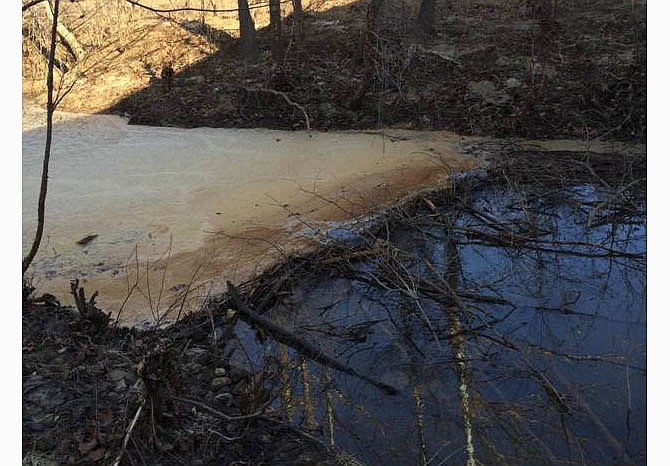The waters of Stinson Creek course their way through the farmlands and timber of Callaway County before finally rolling into the Fulton city limits, bearing with them everything their current has picked up along the way.
Now, with a push from the city of Fulton, residents will have a better idea of what that means.
“The EPA (Environmental Protection Agency) with MDNR (Missouri Department of Natural Resources) have mandated improvements to the city’s storm water and wastewater systems,†wrote Kyle Bruemmer, interim city engineer, in an email. “These improvements are tied to the quality of the water in Stinson Creek.â€
To that end, the city is having two of its employees take water monitoring classes to test the waters rolling into town. And they have also enlisted the help of others who are interested in stream health.
“We are basically testing the entire stretch of the creek that is within city limits,†said Robin Hirsch-Jacobson, assistant professor of biology at William Woods University.
Bruemmer reached out to WWU to form a collaborative effort to monitor Stinson Creek. The result became a research course called Applied Watershed Impairment. The results between the two entities have already made a difference.
“We knew something didn’t look right,†said Hirsch-Jacobson of a recent foray to the stream by his group and employees from the city. “So we reported what we found to the Department of Natural Resources.â€
What they found, where Stinson crosses U.S. 54, was a pool of murky, foamy water created by a blockade of limbs and detritus that had been carried by the stream. Knowing they did not have the experience, yet, to do some of the testing required, the team sought help.
According to a report of investigation by the DNR, a property owned by Gary Horstmeier and recently leased by Nate and Jade Bloss, located on the northwest side of Fulton, near Highway HH, was the source of impairment.
According to an initial investigation by DNR on March 21, wastewater from a broken lagoon pipe and fresh water from a leaking spigot, which was flowing through an old manure dump said to have been left by previous users, were both flushing into an unnamed tributary that runs into Stinson Creek.
Samples collected in the tributary exceeded the acute criteria for ammonia in the creek.
As of a Feb. 24 follow-up investigation, the violations had been corrected.
“It’s a process of getting out there and getting involved,†said Hirsch-Jacobson. “Such ownership keeps people engaged and invested.â€
Although the research course will end in May, students at the university plan to create an extra-curricular environmental club to continue their monitoring.
Held under the title of an “impaired†stream by the EPA since the 1990s, Stinson Creek was technically de-listed in 2010. But a de-listing does not come from the water actually being clean, it comes when the EPA has formulated a Total Maximum Daily Load (TMDL) for a stream, TMDL being the amount of loading of pollutants a water body can receive without violating water quality standards.
Little was done after the de-listing, but a 2015 audit of the city for their permitting requirements by the DNR set in motion a full push to clean up the creek. If the creek is already at its maximum load or near its maximum load by the time it hits the city limits, the city is in a bind.
“For Stinson Creek to ultimately be improved, and to limit future risk,†wrote Bruemmer, “the city must also know the condition of the water entering Fulton.â€
Also watching stream water in Callaway County is the North Callaway Stream Team, which is certified by the Missouri Department of Conservation (MDC). The group was formed a little over a year ago in an effort to get a baseline of stream health in the wake of a potential Concentrated Animal Feeding Operation (CAFO) moving into the area.
The group said that its results have found little that is unsettling thus far, with the exception of a spike in nitrates they found during a May 2015 test on Stinson Creek.
The group does not know the source of the spike, but increased nitrates, which occur when ammonia is combined with oxygen, can be the result of a variety of issues including poorly functioning septic systems, runoff from feedlots or runoff from crops, parks or lawns.
The current issue within the city that put Stinson on the list to begin with is low dissolved oxygen (DO). Dissolved oxygen is essential to the survival of aquatic life, which often act as the ‘canary in a coal mine,’ indicating pollutants in the stream.
The presence of ammonia and nitrates in a waterway can result in unusually large populations of aquatic plants and organisms that feed on those plants. As those organisms die off, bacteria break down the organic matter, using up dissolved oxygen leaving none for aquatic organisms to live on, thus indicating a dead or polluted waterway.

